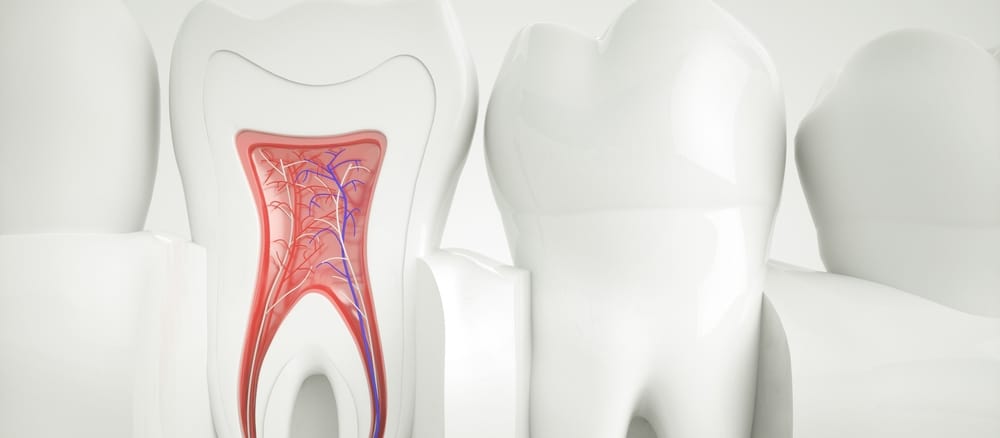What conditions can affect tooth pulp?
Pulpitis
Pulpitis is inflammation of your tooth pulp. It happens when bacteria bypass your dentin and enamel and get into your dental pulp.
Tooth decay, sudden injuries, and chronic tooth grinding can expose your pulp and put it at risk of developing an infection.
Pulpitis can be classified as either reversible or irreversible. Both types of pulpitis can cause not only pain, but also inflammation, and sensitivity. Symptoms are more severe with irreversible pulpitis.
Here’s a look at the key differences between these two conditions:
Reversible pulpitis
Reversible pulpitis refers to inflammation that’s mild enough for your tooth pulp to be saved. Pain is generally mild, and you may only notice it while eating.
The most common cause of reversible pulpitis is tooth decay.
According to a 2016 research review, treatment involves removing the area of tooth decay and restoring your tooth with a pulp cap and filling.
Irreversible pulpits
Irreversible pulpitis is inflammation that has progressed to the point that your tooth pulp can’t be saved. It can cause severe, lingering pain, that also lead to pulp necrosis or pulp death.
A dental professional may be able to save your tooth with a pulpectomy.
A pulpectomy is the first part of a root canal and involves removing your pulp. In other cases, your dentist may need to remove your entire tooth.
Pulp necrosis
Pulp necrosis refers to the death of your pulp inside your tooth. It’s often the result of chronic pulpitis. According to a 2016 research review, tooth decay is the most common cause of pulpitis and pulp necrosis.
Before your condition progresses to pulp necrosis, you may experience pain, inflammation, and other symptoms of pulpitis. Once at the stage of necrosis, you may no longer feel pain if a nerve dies.
Pulp necrosis can lead to a dental abscess, which is a buildup of pus inside your tooth. If untreated, a dental abscess can move to other parts of your body and be life threatening.
In some cases, a root canal may be able to save a tooth with pulp necrosis. In other cases, your tooth will need to be pulled.
Dental pulp calcification
Dental pulp calcification is a condition that causes hard lumps of calcium to form in your pulp. These hard lumps are also known as dental pulp stones.
Pulp stones can develop in one or all of your teeth, according to a 2016 research review. They can either float freely in your tooth pulp or bind to the surrounding dentin. They occur more often in molar teeth.
The cause of dental pulp calcification remains largely unknown, but your risk of developing this condition seems to increase with age.
Pulp stones often don’t cause any symptoms, but they may cause problems during a root canal.
How to prevent tooth pulp concerns
The most effective way to lower your risk of conditions like pulpitis and pulp necrosis is by practicing good dental hygiene. This includes:
- brushing your teeth twice a day for a minimum of 2 minutes each time with a soft-bristled brush
- brushing each tooth on all sides every time you brush your teeth
- using a fluoride toothpaste
- flossing between your teeth at least once a day
- drinking water regularly, especially after eating
- using a mouthguard at night if you tend to grind your teeth when you sleep
- contacting your dentist twice a year for a checkup and dental cleaning
The bottom line
Your tooth pulp is the innermost layer of your tooth that contains nerves and blood vessels.
Your tooth pulp is protected by layers of dentin and enamel. However, tooth decay or injuries to your tooth can expose your pulp and make it susceptible to infection.
If you notice any signs of tooth decay or have symptoms such as pain, sensitivity, or inflammation, it’s important to contact your dentist as soon as possible.
The sooner you can get the right treatment, the better the outcome will likely be for your affected tooth.
Author: Daniel Yetman
Article originally appeared at: https://www.healthline.com



